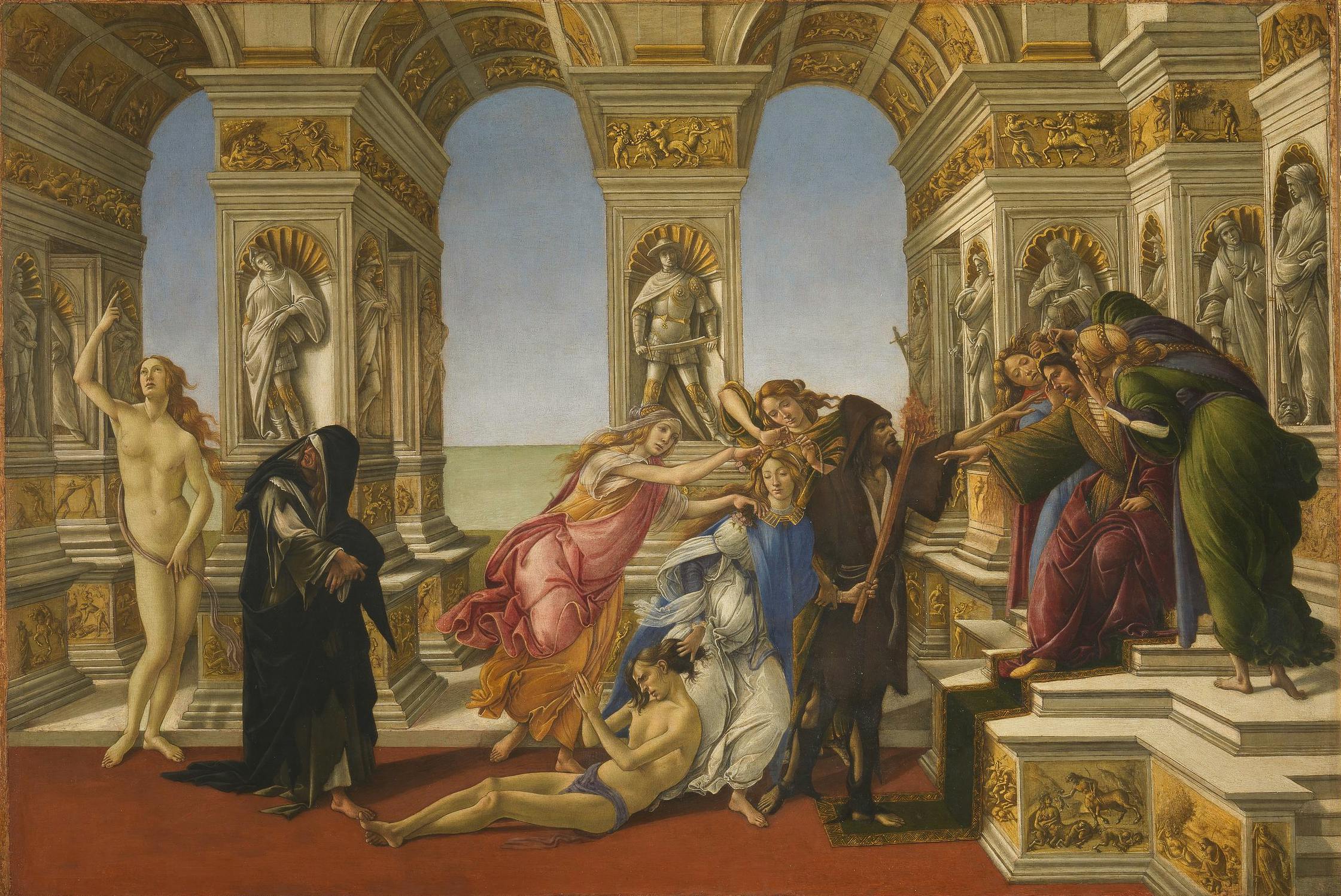Calumny of Apelles
Alessandro Filipepi known as Sandro Botticelli (Florence 1445-1510)
The subject of this fascinating work by Sandro Botticelli was inspired by a lost painting of allegorical theme by the Greek painter Apelles (4th century BC), known thanks to the description of the scholar Luciano di Samosata (2nd century BC). The composition, to be read from right to left, depicts a king on the throne making an imperious gesture of judgement towards a half-naked man dragged before him. The king has donkey ears, like those inflicted by the god Apollo on King Midas for misjudging a dispute. In the painting, the sovereign is advised by two graceful female figures, who are the personifications of Ignorance and Suspicion. The helpless victim is pulled by the hair by a charming woman carrying a torch, who should be identified as Calumny, which is also the main theme of the work. She is accompanied by Rancour, a man in ragged clothes, unkempt and spindly in appearance, while two maidens, Fraud and Deceit, are adorning her hair. Not far away, the composition is closed by a woman dressed in black, Penitence, who turns her gaze towards Truth, represented as a naked young lady and ignored by the other characters. The backdrop that welcomes the scene confirms the Greco-Roman origin of the work: a portico overlooking the sea, adorned with statues, reliefs, and sculptural friezes. The figurations adorning the architecture depict characters and stories from mythology, the Bible, and medieval literature, and still today their meaning in this context is controversial; a display of the refined culture of the patron and of the Florentine environment at the end of the 15th century. One of Botticelli’s collaborators, Bartolomeo di Giovanni (Florence 1458-1501), possibly participated in their execution.
The painting, probably carried out around 1495, coincides with the end of the Laurentian age and the advent of the Republic inspired by Girolamo Savonarola. It was the last work with allegorical-mythological subject executed by Botticelli, who proved to be an extraordinary narrator and interpreter of complex concepts.
Lucian's text De Calumnia - that described Apelles' painting, from which Botticelli took his inspiration - became widely popular in the 15th century thanks to Latin and vernacular translations of the Greek original. According to Lucian, the painter Apelles supposedly created his work after being the victim of calumny, and it can’t be excluded that the panel painted by Botticelli may also have been carried out for a similar reason. According to Giorgio Vasari, in the mid-16th century the painting now preserved at the Uffizi belonged to Fabio Segni, who probably had inherited it from his father Antonio Segni, (1457-post 1502), a person about whom little is known.
R. Lightbown, Botticelli. Complete Catalogue, London 1978, pp. 87-92; A. Cecchi, Botticelli, Milano 2008, pp. 300-306; Nicoletta Pons, scheda n. 8.8, in Denaro e Bellezza. I banchieri, Botticelli e il rogo delle vanità, a cura di L. Sebregondi e T. Parks, Firenze, Giunti 2011, p. 246; La Calunnia di Botticelli. Politica, vizi e virtù civili a Firenze nel Rinascimento a cura di M. Centanni e S. Agnoletto, Milano 2023
